Survey block
The survey block is used to collect customer info.
This info can be emailed, added to a customer profile, and/or saved as a variable in the AICX platform.
To add a survey block to a dialogue flow, click the blue chatbot button and select Survey.
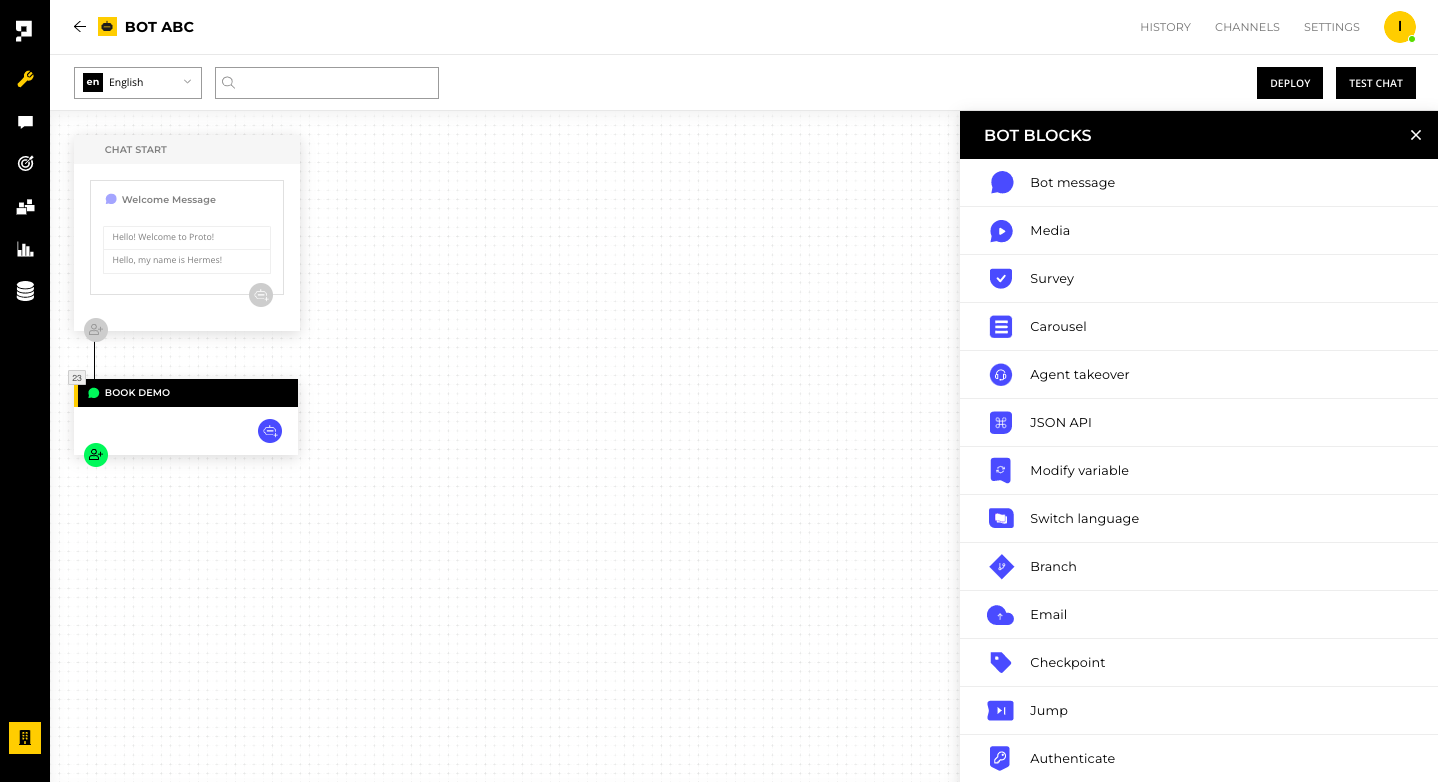
Under the COLLECT tab, click the FIELD button to add new fields, and then click the field to expand the details and edit them.
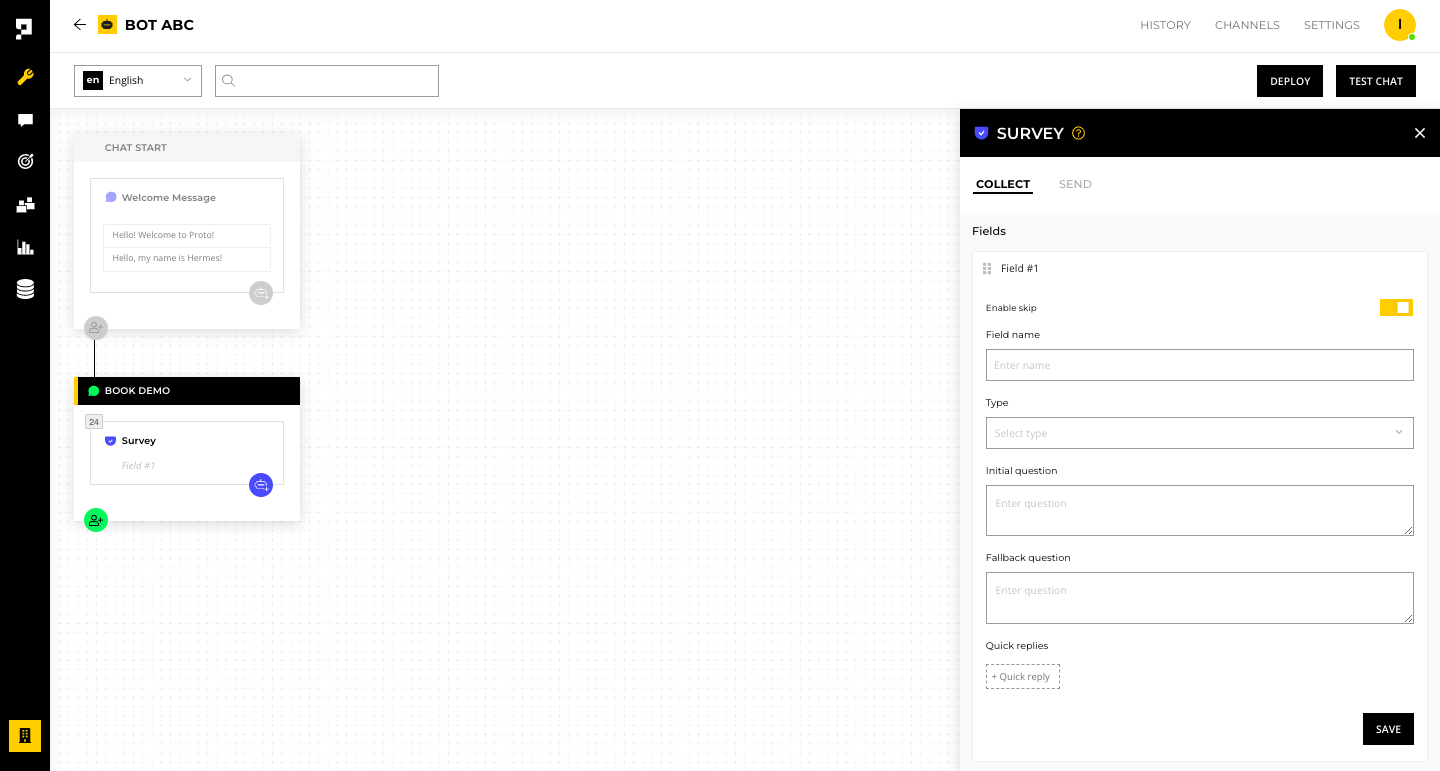
Collect fields
Under the COLLECT tab, the survey block fields have multiple functions:
- Enable skip toggle allows the customer to skip that specific survey question.
- Field name is the variable name to which customer info will be referred in the AICX platform.
Best Practice
Write the Field name in lowercase and replace spacing with
_(underscore) so the variable is usable within the JSON API block and modify variable block.
- Type is the type of info the chatbot expects to receive from the customer, such as text, email, address, file, etc. The customer's answer will be validated using the field type which means if the field type is defined as "Email", the answer will only be accepted if it comes in an email format.
- Initial question is the survey question the chatbot will ask the customer.
- Fallback question is an alternative to the initial survey question, which will be used if the customer's answer doesn't follow the expected format (e.g. the customer answers with text to a field type "Number".
Note
By default, the Enable skip toggle is enabled, therefore if the customer responds with a wrong Type, the value will not be saved and will skip to the following message. If the Enable skip toggle is disabled, the Fallback question will be sent to the customer in an effort the clarify the information request.
- Quick replies are pre-written answers that customers can select instead of typing.
When the fields are complete, click SAVE.
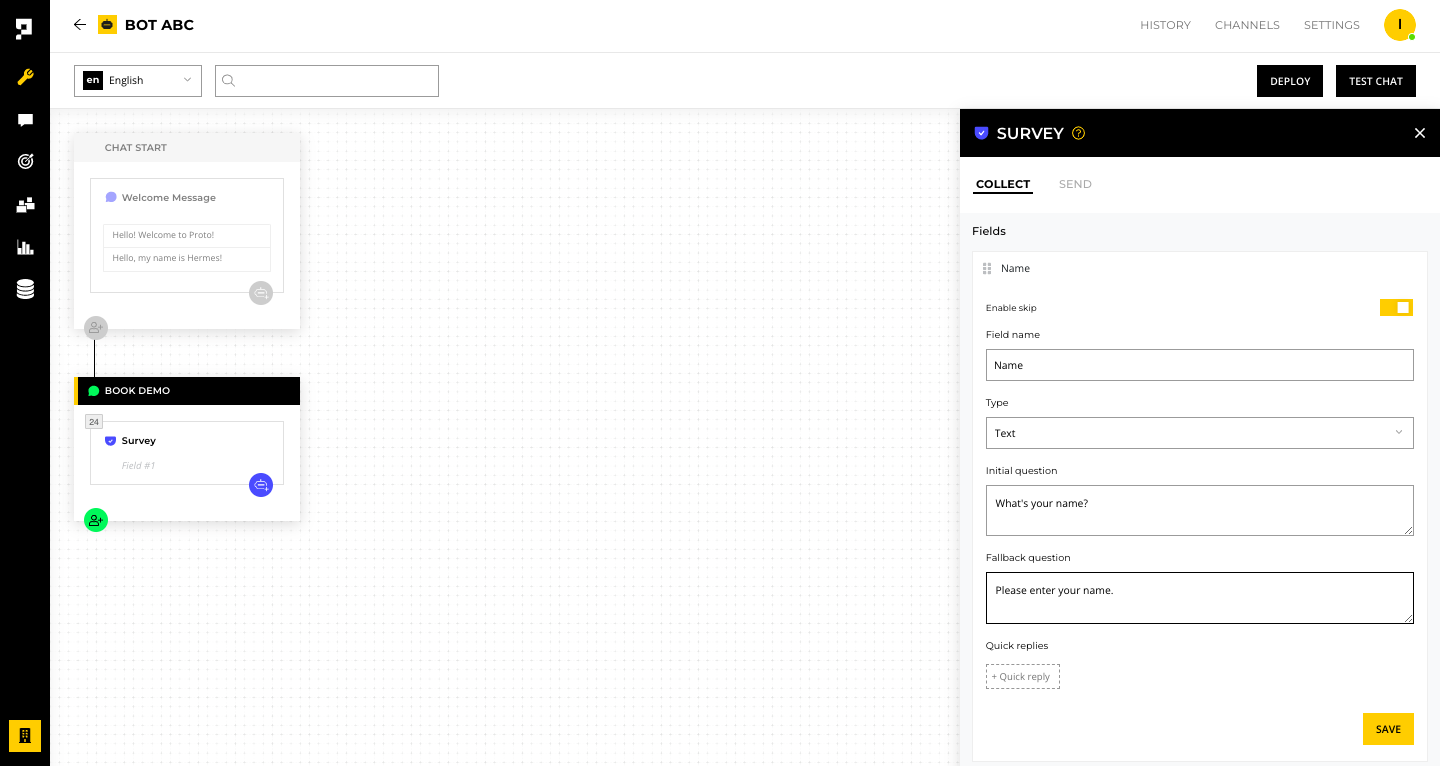
Send fields
Under the SEND tab, the survey block will send collected customer info.
- In the Email field, type the email address where the survey results will be sent.
- In the Subject field, type the subject line of your email template.
- In the Message field, type the email message of your email template.
You can use the information received in the survey in the email being sent - see Using survey block variables below.
When all fields are completed, click SAVE.

Using survey block variables
To use customer info collected in the survey block in other blocks, such as the bot message block, the JSON API block or the SEND tab, use the curly bracket syntax { } to represent the variable.
For example: "Hi {name}, how are you?"

Sample use case for Respondent type
You may use the Respondent type to check which corresponding respondent the customer choose and use the attributes from the variable in the Create Case block. The following is a sample use case of Respondent type in Survey block.
- Create a list of respondents in a Case Group in Track, add the alternative names of the respondent.
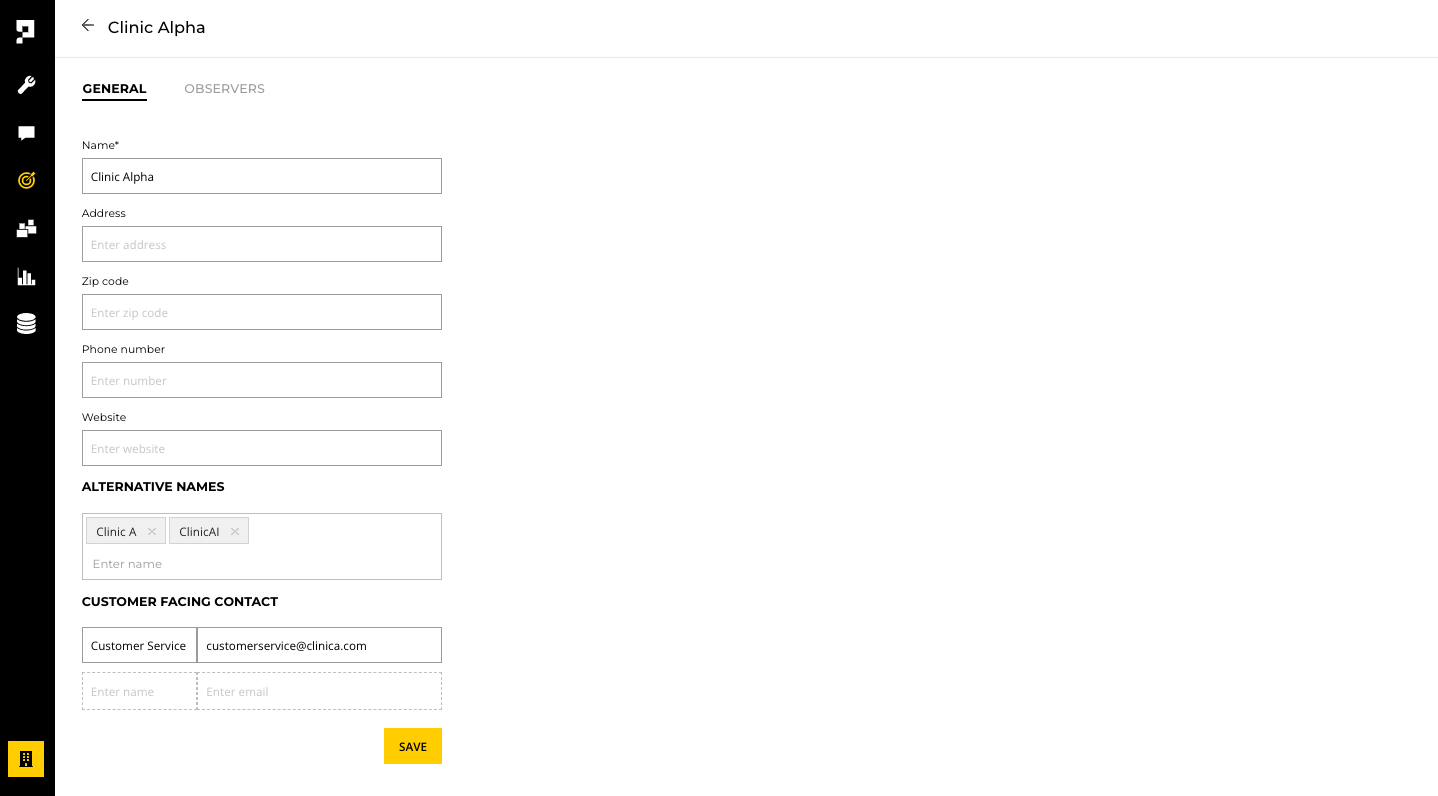
- In the Survey block, select the Respondent of the case group from the Type list.

- If the customer provide the name/alternative name of the clinic listed in the respondent list, you will be able to get the defined name and the respondent ID from the variable by using the
{defined_variable.attr}attribute. The respondent ID value can be use in the "Advanced" respondent field in a Create Case block.
Example: Display the respondent name in the bot message with {defined_variable.attr.name} to confirm the clinic the customer is requesting.
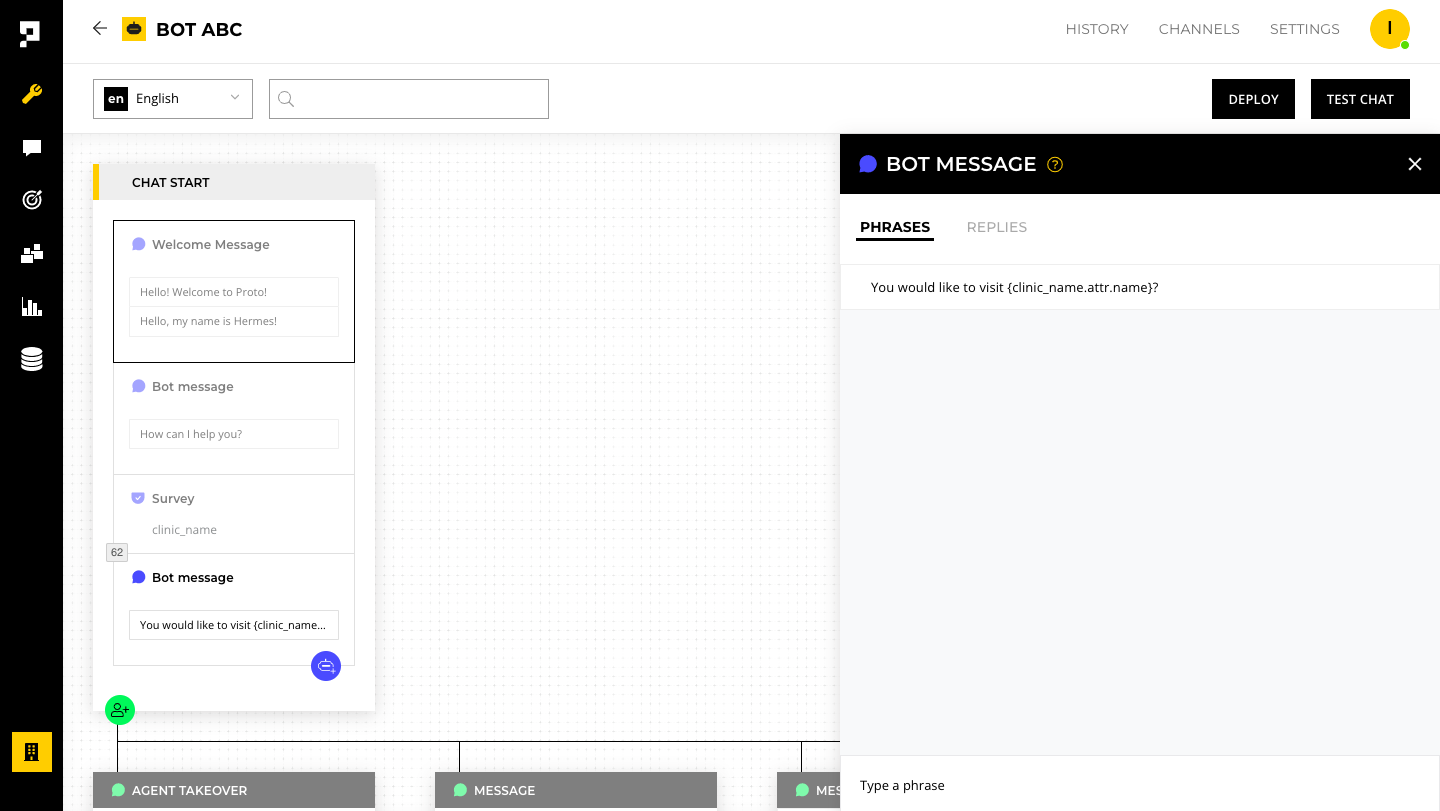
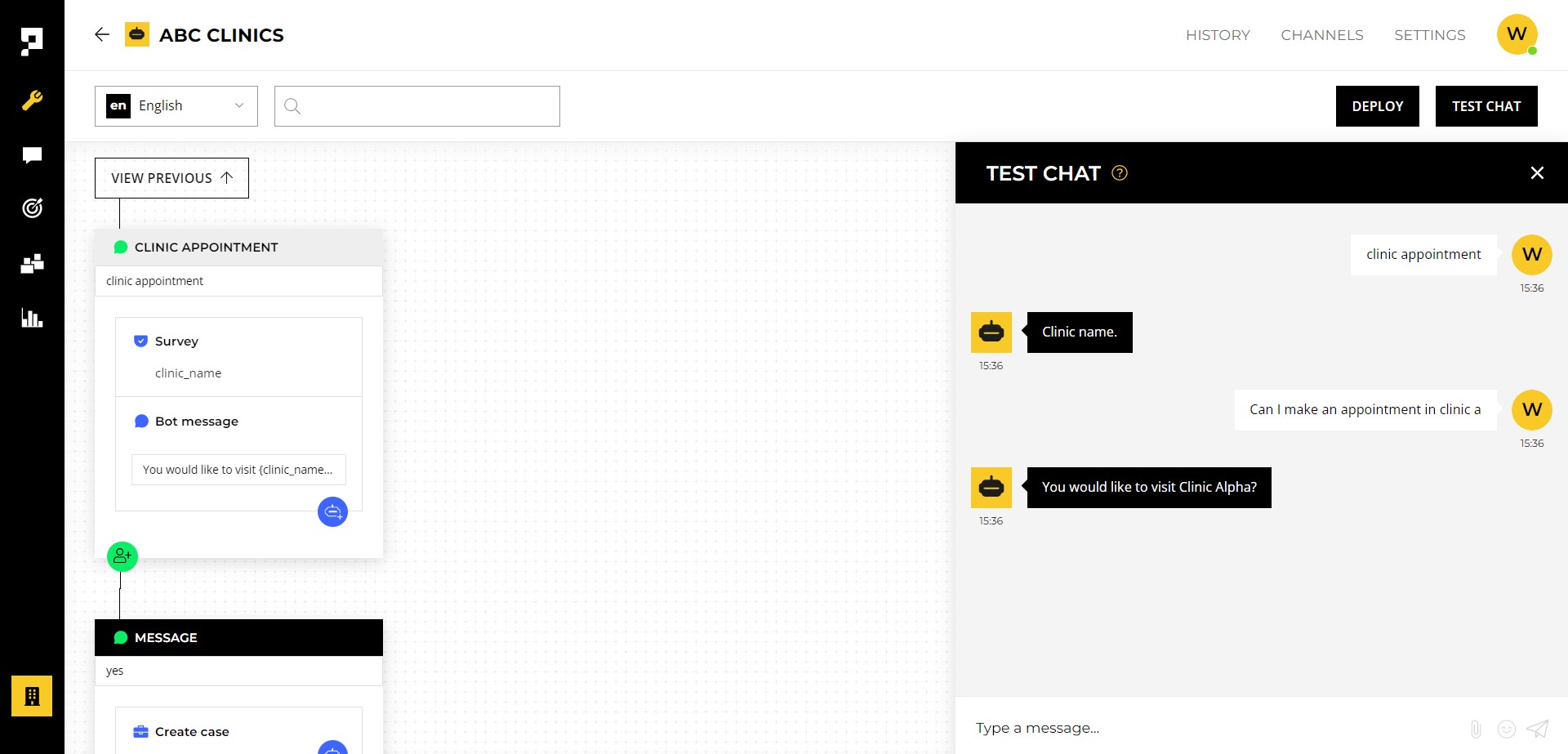
Example: Use the respondent ID in the Create Case block with {defined_variable.attr.id} to create a case in Track.
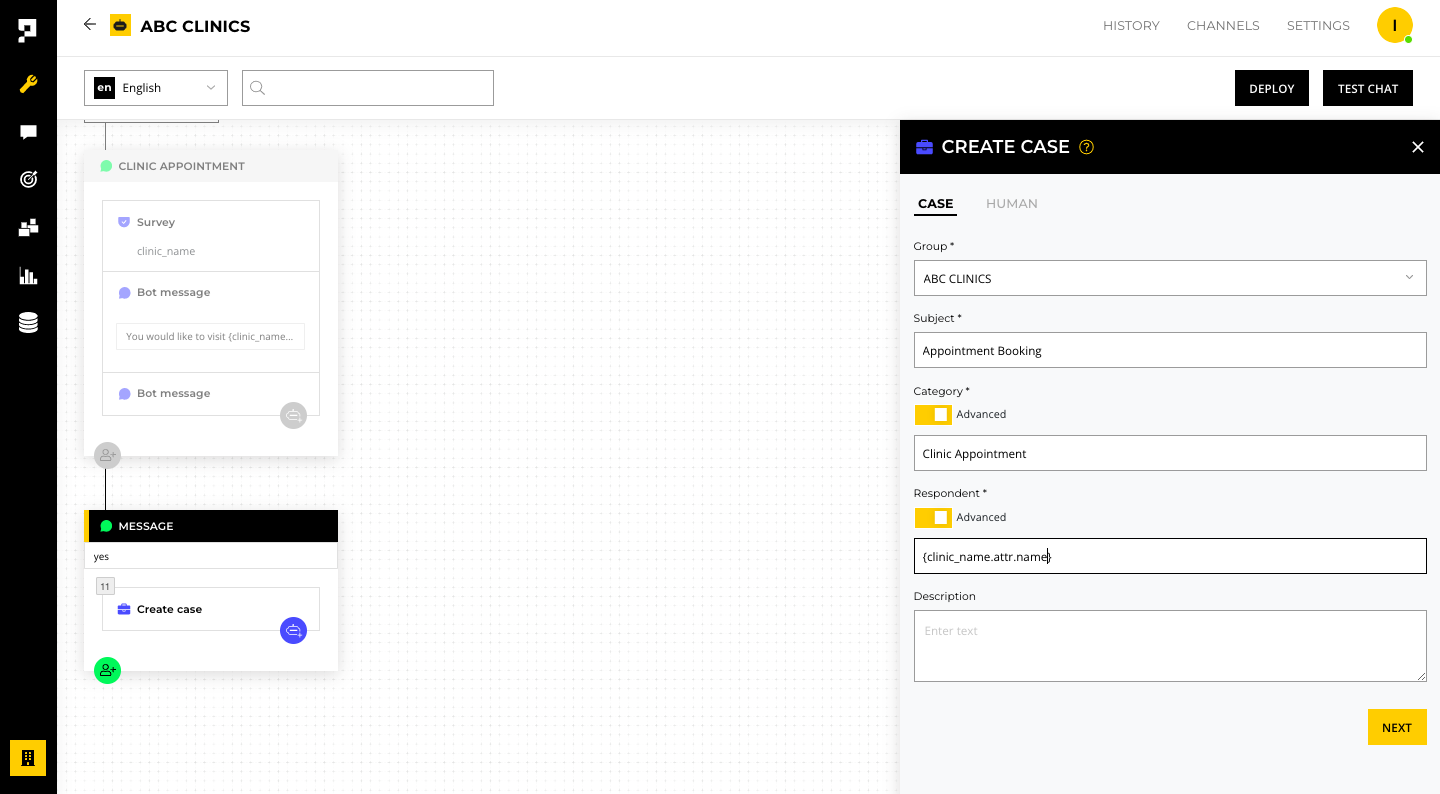
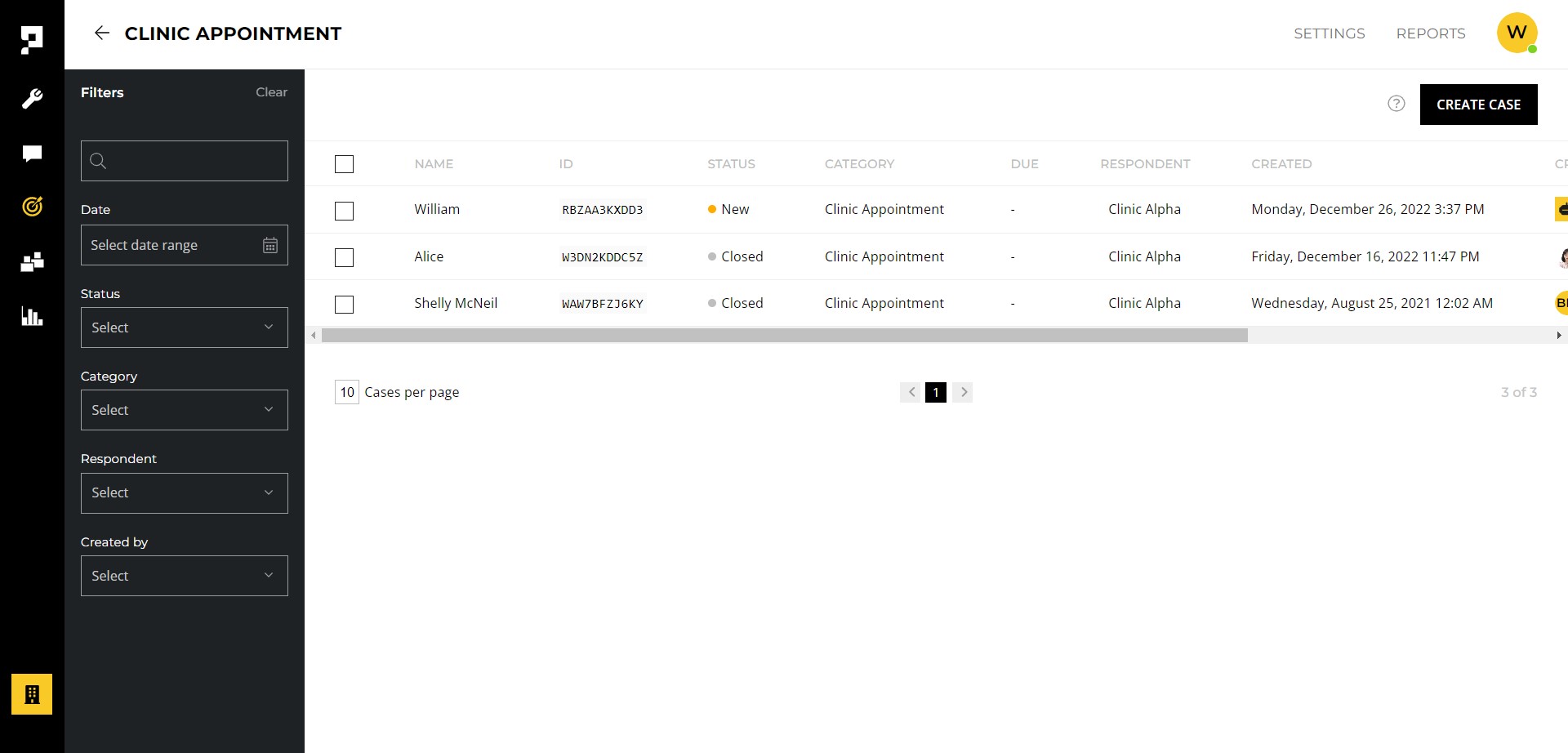
Updated over 1 year ago
